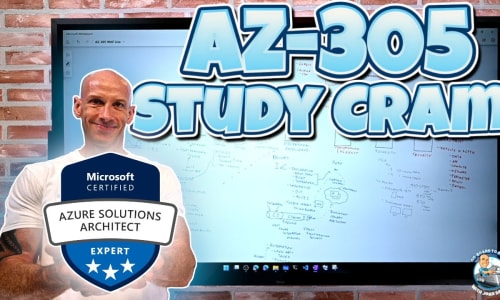See all John Savill's Technical Training transcripts on Youtube

AZ-305 Designing Microsoft Azure Infrastructure Solutions Study Cram - Over 100,000 views
3 hours 38 minutes 34 seconds
🇬🇧 English
Summaries Topics Transcript Chapters Titles Socials Twitter Blog Post Newsletter Quotes Quizzes Ask ChatGPT

Omnivision Solutions Ltd
- Getting Started
- Create Transcript
- Pricing
- FAQs
- Recent Transcriptions
- Affiliates